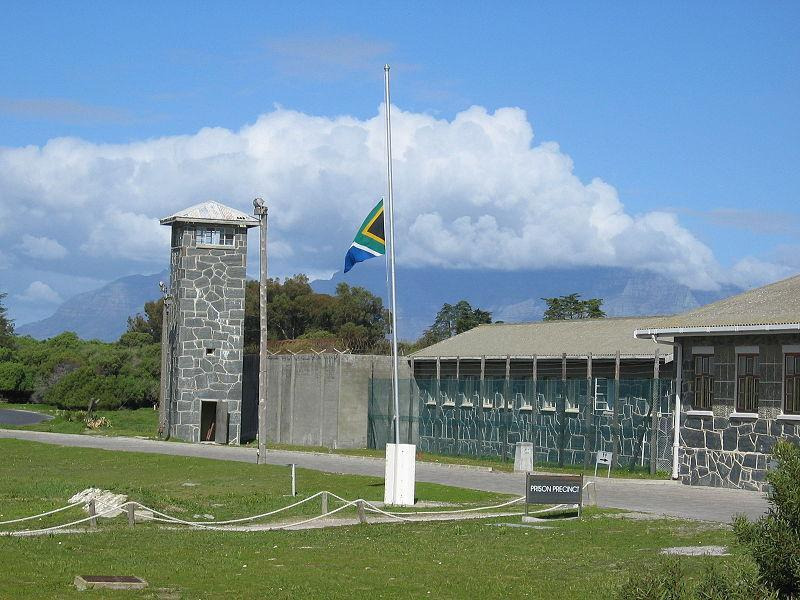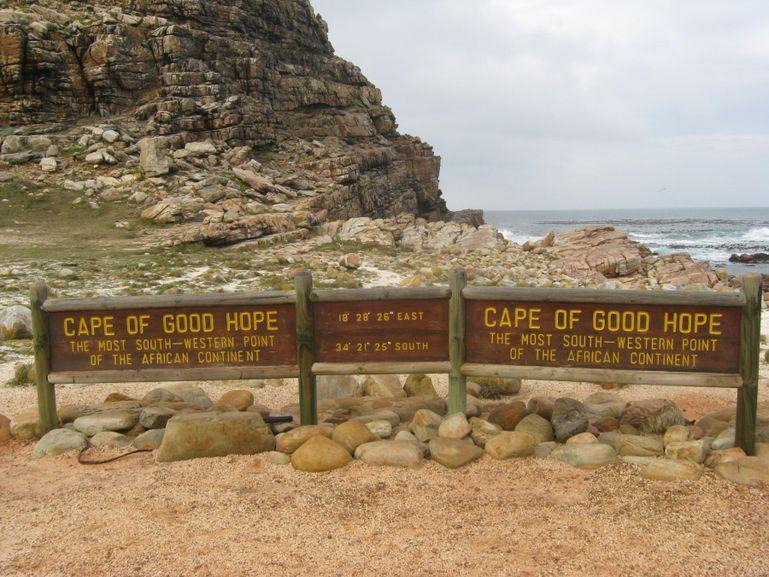Cape Town Cultural Tapestry: A Journey Through Art and History
Museum culture in Cape Town!
Boulders Beach

Why Visit?
Embark on a cultural and natural expedition at Boulders Beach, just around the corner from the picturesque town of Simon"s Town, South Africa. Renowned for its sheltered bays, stunning sandy beaches, and the captivating African penguin colony, this destination offers more than just scenic beauty—it"s a portal to engaging ecological and historical narratives.
Begin your day at the quaint Simon"s Town Museum, housed in The Residency building, used as the winter residence for the Governors of the Cape. Here, delve into the town’s maritime history and its role during World War II. Explore exhibits on the cultural heritage of the area, including the poignant tales of forced removals during the apartheid era. It"s about a 45-minute drive from Cape Town or a scenic ride on the MetroRail train line along the False Bay coast.
Next, make your way to Boulders Visitor Centre, just a short drive from the museum. This center offers insightful displays about the life cycle and habitat of the African penguins. A boardwalk leads from the center to Foxy Beach, offering a close view of the penguins without disturbing their natural habitat. Here, you can witness these charming creatures amidst the dramatic backdrop of granite boulders that protect the cove from wind and large waves, creating an almost tropical illusion.
Finish your tour with a stroll along the boardwalk to Boulders Beach itself. Besides its beauty, the beach is a great spot for swimming and penguin watching. Boulders Beach forms part of the Table Mountain National Park Marine Protected Area, ensuring the conservation of its unique environment and resident penguins.
The combination of cultural history and natural beauty makes Boulders Beach an unmissable stop in South Africa"s museum tour circuit, offering insights into both the natural world and the human stories that have shaped it.
Museum Tips: Check for specific amenities and accessibility features relevant to museum travelers.
Table Mountain and Cableway

Why Visit?
Embark on a cultural expedition to one of Cape Town’s crowning glories, Table Mountain, pairing natural wonder with a rich historical narrative. Begin your journey at the heart of the city, where the Iziko South African Museum awaits, nestled in the charming Company"s Gardens. The museum, accessible via a short ride from the Cape Town city center via taxi or the MyCiti bus, offers an enlightening prelude to the day’s adventures. Dive into South Africa’s deep-rooted history through its extensive collection of fossils and learn about the indigenous cultures that once roamed the lands beneath Table Mountain.
Post-museum, make your way to the nearby Table Mountain Aerial Cableway, a short bus or taxi ride away. As you ascend the 1086 meters to the summit in the revolving cable car, savor panoramic views that stretch out over the city and ocean. The cableway operates every 10 to 15 minutes and tickets can be purchased online to avoid the queues.
Once atop, indulge in the majesty of Table Mountain National Park, a UNESCO World Heritage Site. Here, you’re treading on ancient ground; the mountain’s sandstone foundations were formed over 500 million years ago, making it one of the oldest mountains in the world. Explore the flora and fauna that adorn the landscape, some of which, like the famous fynbos, are found nowhere else on the planet.
Conclude your visit at the mountain’s café, where you can reflect on the day’s cultural and natural escapades over a cup of Rooibos tea, another South African native, while the city buzzes beneath the tranquil expanse of your mountain vista. This perfect combination of cultural richness and natural beauty provides a comprehensive, soul-enriching Cape Town experience.
Museum Tips: Check for specific amenities and accessibility features relevant to museum travelers.
Robben Island

Why Visit?
Robben Island Museum Tour Itinerary
Getting There
Start your journey to Robben Island by catching a ferry from the Nelson Mandela Gateway at the V&A Waterfront in Cape Town. Ferries usually depart at 9 AM, 11 AM, and 1 PM, but it"s wise to arrive at least 30 minutes early for security checks and boarding. The scenic boat ride takes approximately 30 minutes and offers spectacular views of Table Mountain and Cape Town’s coastline.
Tour Highlights
Upon landing, you’ll be greeted by a tour guide, often a former political prisoner, which adds a profound personal narrative to the visit. The tour begins with a bus ride around the island, stopping at various historical sites. Key highlights include the Lime Quarry, where Mandela and fellow inmates toiled, and the poignant Leper"s Graveyard.
The heart of the tour is the visit to the maximum-security prison. Here, you"ll see Nelson Mandela’s tiny cell, preserved exactly as it was during his 18-year incarceration, a stark reminder of the harsh realities of apartheid. The emotional impact of standing in this small space, considering the immense personality who once inhabited it, is profound.
Interesting Facts
- Robben Island has been used as a prison since the end of the 17th century but is most famous for its use during apartheid when it held political prisoners.
- The island is also a UNESCO World Heritage Site, not only for its historical importance but also for its wildlife, including a colony of over 1300 African Penguins.
Before You Leave
Explore the museum shop for educational books and souvenirs to remind you of the resilience and spirit of freedom fighters. The ferry ride back to Cape Town provides a perfect moment for reflection on the powerful lessons of Robben Island.
Booking Tips
Advance booking is strongly recommended as tours can fill up quickly, especially during peak tourist season. Check the weather forecast as trips can be cancelled due to bad weather.
Museum Tips: Check for specific amenities and accessibility features relevant to museum travelers.
Table Mountain National Park

Why Visit?
Embark on a captivating museum tour nestled within the breathtaking landscapes of Table Mountain National Park, a jewel in Cape Town"s crown. This journey isn"t just about natural beauty; it"s a deep dive into the rich cultural tapestry of the region.
Start your adventure at the Iziko South African Museum, located in the heart of Cape Town. Easily accessible by public transport or car, this museum, founded in 1825, provides profound insights into South Africa"s biological and cultural history. Marvel at the fascinating exhibits ranging from fossil displays to Khoisan artifacts. Don"t miss the Whale Well – home to a mesmerizing collection of whale skeletons and an immersive audio-visual experience.
Next, take a short drive or hop on a MyCiTi bus towards the foothills of Table Mountain to visit the Iziko Bo-Kaap Museum. This vibrant museum is located in the historic Bo-Kaap area, famous for its brightly colored homes and rich Cape Malay heritage. The museum is housed in a 1760s Dutch house and provides an intimate look into the life of a typical Malay family. Explore the Islamic history and cultural contributions made by the Cape Malay community to Cape Town.
Afterward, venture into the Table Mountain National Park itself. While not a conventional museum, the park offers a "live" exhibit of South Africa"s unique flora and fauna within the Cape Floral Region, a UNESCO World Heritage Site. Opt for a guided tour to learn about the ecological and historical significance of the area. The park"s diverse habitats are home to over 2,200 species of plants and a variety of wildlife.
Conclude your tour at the Rhodes Memorial, located on the northern flank of Table Mountain. Built in memory of Cecil Rhodes in 1912, the site provides a controversial yet pivotal chapter in South Africa"s history. The classical architecture and dramatic stone steps offer a perfect spot to reflect on your journey through Cape Town"s culture and history.
Museum Tips: Check for specific amenities and accessibility features relevant to museum travelers.
Cape of Good Hope Nature Reserve

Why Visit?
Cape of Good Hope Nature Reserve: A Museum Tour of Nature"s Gallery
Embark on a captivating journey at the Cape of Good Hope Nature Reserve, a treasure trove of natural history, where the Atlantic and Indian Oceans meet. Begin your adventure in Cape Town, and drive along the scenic Chapman’s Peak Drive to fully absorb the dramatic vistas en route to the reserve. Here, history and nature intertwally in a breathtaking landscape.
Morning Exploration: Maritime & Natural History
Start at the Flying Dutchman Funicular, named after the legendary ghost ship, which takes you up to the old lighthouse. Learn about the rich maritime history and the perilous journeys of explorers who navigated these treacherous waters. At the top, enjoy panoramic views of the rugged cliffs and ocean, illustrating tales of shipwrecks and ancient navigational routes.
Midday: Fauna and Flora
Descend to visit the numerous informational boards that detail the unique biodiversity of the Cape Floral Region, a UNESCO World Heritage Site. The area boasts over 1,100 species of indigenous plants, some of which are found nowhere else on Earth. Keep an eye out for local wildlife such as baboons, ostriches, and perhaps even a bontebok.
Afternoon: Cultural Insights
In the afternoon, head to the nearby historical monuments. The Cape Point Lighthouse itself is a museum piece, offering insights into the life and technology of 19th-century lighthouse keepers. The nearby Diaz Cross commemorates the landing of Portuguese explorer Bartolomeu Dias, who was the first European to round the Cape in 1488.
Visit Practicalities
The reserve is open daily, and entry fees apply. Guided tours can enhance your experience with expert insights into both cultural history and the ecological importance of the region. Wear comfortable walking shoes and bring along a camera to capture the stunning landscapes and historical landmarks.
End your tour with a reflective stroll along one of the secluded beaches, pondering the interwoven narrative of man and nature that the Cape of Good Hope Nature Service eloquently tells.
Museum Tips: Check for specific amenities and accessibility features relevant to museum travelers.

